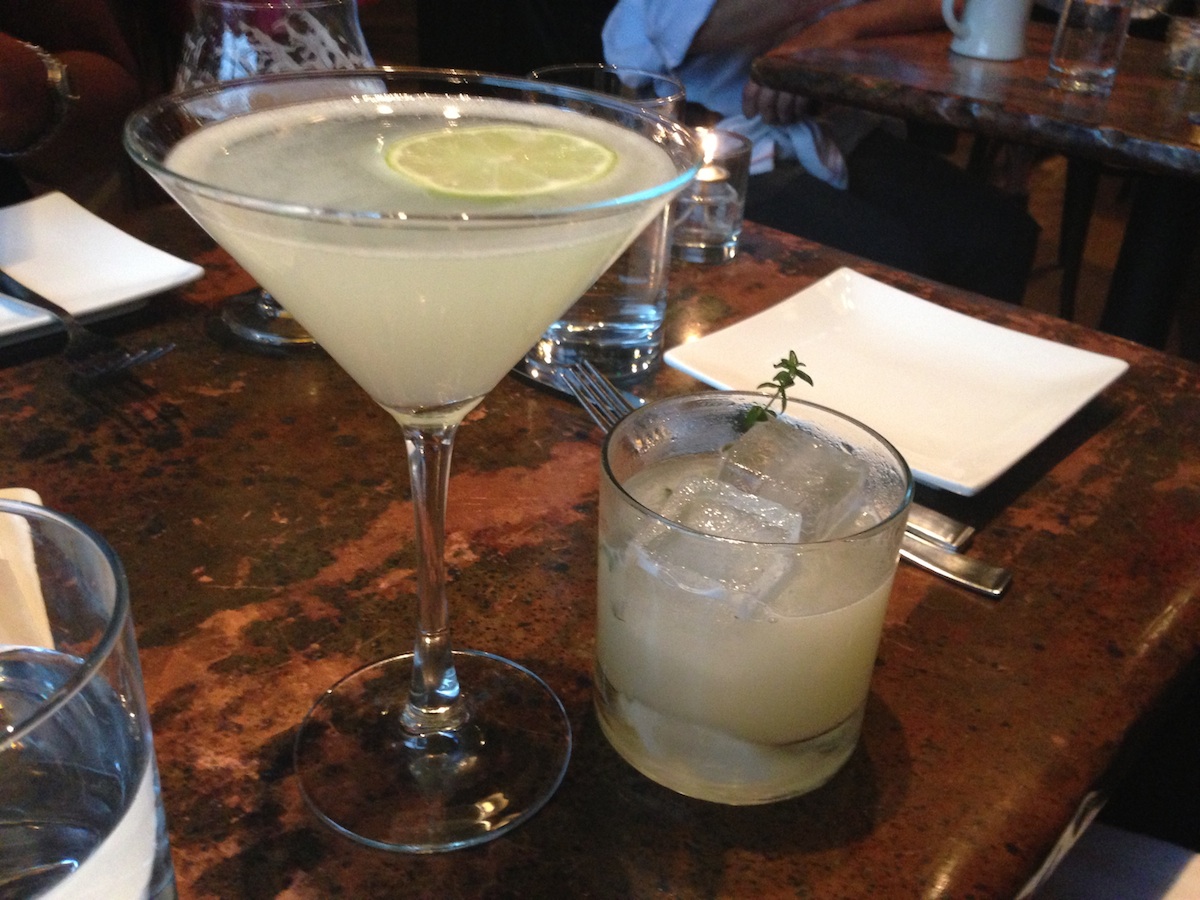The Local newsletter is your free, daily guide to life in Colorado. For locals, by locals.
In the late 50s, my maternal grandmother got so tipsy at a family picnic that she swore off Manhattans for life. She replaced her once-signature bourbon bomb with another classic: the gimlet. It was a fitting swap. The gin- or vodka-based tipple, which cocktail historians trace back to the British Royal Navy’s war with scurvy, experienced a mid-century renaissance when Raymond Chandler—a bourbon drinker—featured the drink in his 1953 novel, The Long Goodbye. Regardless of my grandmother’s inspiration for the drink, a family holiday could not commence until my parents made sure there was Rose’s lime juice in the house. Needless to say, recent discussions of a more modern renaissance make me chuckle. In my mind, the gimlet never went away.
From the Bitter Bar in Boulder to Ocean Prime in Denver, gimlets are indeed popping up on cocktail lists all over the Front Range. While a traditional gimlet is made as my grandmother took hers—with Rose’s lime juice—many modern bartenders understandably replace this corn syrup–flavored mixer with a combination of fresh lime and simple syrup. The results of such tinkering, however, are varied. Many such tweaks create interesting cocktails, but they rarely have the sugar and cooked lime notes of the old-school drink. “[T]his is one of the rare instances in which I counsel not to use fresh-squeezed juice,” Dale Degroff writes of the ongoing debate in the Essential Cocktail.

In Colorado, where we are blessed with many impressive bar programs, look for versions that include house-made lime cordial. To make a cordial, bartenders go beyond just mixing juice and sugar—they draw out the aromatic oils in a lime’s peel. “When limes were running $120 a case we started soaking spent lime shells in simple syrup for 48 hours to…boost the lime profile in drinks containing the anemic, and expensive, juice,” says Kevin Burke, the bar brains behind Colt & Gray’s underground cocktail temple, Ste. Ellie. Even though lime prices have returned to normal levels, Burke still uses the flavorful creation in the Morning Direction, a gimlet-inspired combination of CapRock vodka, Cocchi Americano, grapefruit juice, and lime cordial. Earlier this year, Allison Anderson added a gimlet of Leopold’s American Small Batch Gin to Frasca Food and Wine’s cocktail list. She flavors the classic with her recipe for preserved lime syrup. “I cure lime zest in a bath of high-proof rum, strain the infused rum from the zest, and add [simple] syrup with a touch of citric acid,” Anderson says. “The resulting cordial is bright, nicely sweet, and has immense lime flavor—and it keeps for months.” At the Populist, bar manager Rob Corbari recently added two versions of the drink to his list, a classic and a variation (both pictured). The classic features a cordial of lime juice, water, sugar, and steeped peels; and the variation includes an agave-thyme cordial and limoncello.
For me, the gimlet is a tale of two extremes. In addition to ordering it at establishments that are savvy enough to make their own cordial, it’s a good choice when life lands me in one of those watering holes where I am scared to order anything but a beer (you know the kind). In its purest form, a gimlet is pretty hard to mess up. “A real gimlet is half gin and half Rose’s Lime Juice and nothing else,” Chandler wrote. “It beats martinis hollow.” In my grandmother’s case, it even trumped Manhattans.
Follow Stacey Brugeman on Facebook, Instagram, and Twitter @denveromnivore.








